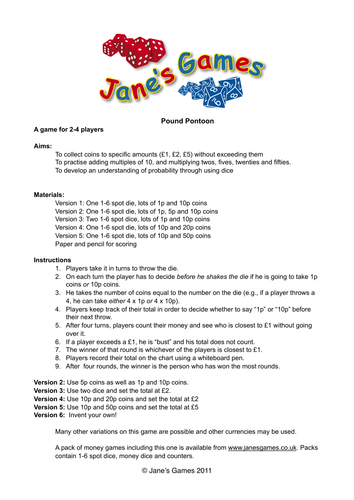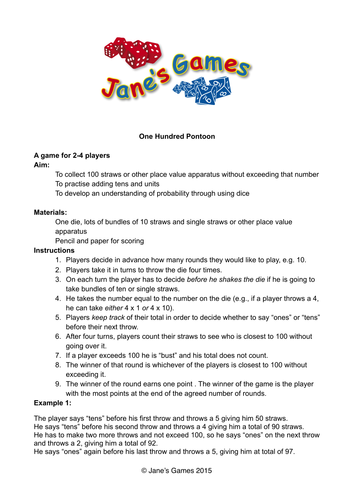Jane's Games
I have been a teacher for 35 years both in the UK and overseas. I started designing maths games while teaching teachers in Tanzania. I needed games that were quick and simple to play but taught basic number concepts. I design games wherever I see the need, whether for individual children who are struggling with a concept, or simply not finding anything suitable.The original printed sets have been available since 2012, but I have created many more since, as well as improving and updating old one





















